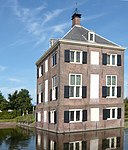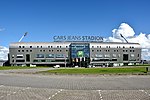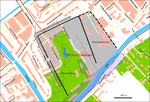Vreugd en Rust
Defunct restaurants in the NetherlandsMichelin Guide starred restaurants in the NetherlandsPages containing links to subscription-only contentRestaurant stubsUse British English from January 2013

Restaurant Vreugd en Rust is a defunct restaurant in Voorburg, Netherlands. It was a fine dining restaurant that was awarded one Michelin star in 1990 and retained that rating until 1993.Part-owner and head chef Henk Savelberg. Together with some admirers he had set up a company that first exploited restaurant Seinpost and later Vreugd en Rust. In 1993 the company collapsed and Savelberg was bought out. The new head chef was Gert Jan Hageman.New owner Henk Savelberg closed the restaurant in 1995 and renovated the mansion. In 1997 he reopened it as restaurant-hotel Savelberg.The building is located beside the park Vreugd en Rust in Leidschendam-Voorburg.
Excerpt from the Wikipedia article Vreugd en Rust (License: CC BY-SA 3.0, Authors, Images).Vreugd en Rust
Oosteinde, Leidschendam-Voorburg
Geographical coordinates (GPS) Address Nearby Places Show on map
Geographical coordinates (GPS)
| Latitude | Longitude |
|---|---|
| N 52.069644444444 ° | E 4.3695694444444 ° |
Address
Central Park
Oosteinde
2271 EA Leidschendam-Voorburg
South Holland, Netherlands
Open on Google Maps









